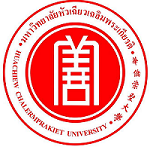กรุณาใช้ตัวระบุนี้เพื่ออ้างอิงหรือเชื่อมต่อรายการนี้:
https://has.hcu.ac.th/jspui/handle/123456789/4663| ชื่อเรื่อง: | 基于于“深度学习”的国际中文教育翻转课堂测评指标体系构建研究 |
| ชื่อเรื่องอื่นๆ: | Research on the Construction of Flipped Classroom Evaluation Index System for International Chinese Education Based on Deep Learning |
| ผู้แต่ง/ผู้ร่วมงาน: | 李昀璟 Li Yunjing 韩颖琦 Han Yingqi Huachiew Chalermprakiet University. College of Chinese Studies. Graduate Student Guangxi University. School of Literal Arts |
| คำสำคัญ: | ภาษาจีน -- การศึกษาและการสอน Chinese language -- Study and teaching การศึกษานานาชาติ International education การศึกษาระหว่างวัฒนธรรม Cross-cultural studies นักศึกษาต่างชาติ Students, Foreign เทคโนโลยีทางการศึกษา Educational technology 汉语 -- 学习和教学 跨文化教育 国际学生 ห้องเรียนกลับด้าน Flipped classrooms 颠倒的教室 การเรียนรู้เชิงลึก (การเรียนรู้ของเครื่อง) Deep learning (Machine learning) 深度学习 (机器学习) |
| วันที่เผยแพร่: | 2023 |
| สำนักพิมพ์: | มหาวิทยาลัยหัวเฉียวเฉลิมพระเกียรติ |
| แหล่งอ้างอิง: | วารสารวิชาการภาษาและวัฒนธรรมจีน 10,2 (กรกฎาคม-ธันวาคม 2566) :128-141 |
| บทคัดย่อ: | 深度学习在国际中文教育中的发生是学生以语言学习为载体,以“翻转课堂”为组织课堂的基本形式,对国际学生进行语言能力的建构,其核心是在原有语言的基础上不断迁移重构,实现学习者心智的提升、交际的应用、文化的理解。基于“深度学习”的国际中文教育翻转课堂测评指标体系的构建,本文采用教育效果评价中最基本的思路,利用文献研究法和专家咨询法,初步构建了基于深度学习的汉语教育测评指标体系,形成了涵盖课前内容统整、课中能力建构、课后交流交际、学生反馈评价4个一级指标和20个二级指标的3层结构体系,利用层次分析法计算各指标权重,4个一级指标的权重分别为0.22、0.22、0.36和0.20。研究发现:教学内容、教学方法和教学管理等因素极大地影响了学生的深度学习情况。因此应结合课程特点,选择不同教学形式,制定不同的教学方案,提高学生的活跃度和参与度。 In-depth learning in international Chinese language education means that students use language learning as a carrier to construct language ability in the overshoot of interactive dialogue built in the Chinese learning situation. The core is to continuously migrate and reconstruct the original language to realize the Mental improvement, communication application, cultural understanding. In accordance with the idea of constructing the most commonly used evaluation index system in educational evaluation research, this study preliminarily constructs a Chinese language education evaluation index system based on deep learning by using the literature method, expert consultation method and analytic hierarchy process. The evaluation indicators of Chinese language education specifically include four first-level indicators: content integration before class, capacity building during class, communication after class, and student feedback and evaluation. Each first-level indicator includes five second-level indicators. The research result shows that the expression of Chinese education evaluation based on deep learning is: |
| รายละเอียด: | สามารถเข้าถึงบทความฉบับเต็ม (Full Text) ได้ที่: https://so02.tci-thaijo.org/index.php/clcjn/article/view/261045/178279 |
| URI: | https://has.hcu.ac.th/jspui/handle/123456789/4663 |
| ปรากฏในกลุ่มข้อมูล: | College Of Chinese Studies - Articles Journals |
แฟ้มในรายการข้อมูลนี้:
| แฟ้ม | รายละเอียด | ขนาด | รูปแบบ | |
|---|---|---|---|---|
| Research-on-the-Construction-of-Flipped-Classroom-Evaluation-Index-System-for-International-Chinese-Education-Based-on-Deep-Learning.pdf | 272.2 kB | Adobe PDF | ดู/เปิด |
รายการทั้งหมดในระบบคิดีได้รับการคุ้มครองลิขสิทธิ์ มีการสงวนสิทธิ์เว้นแต่ที่ระบุไว้เป็นอื่น
